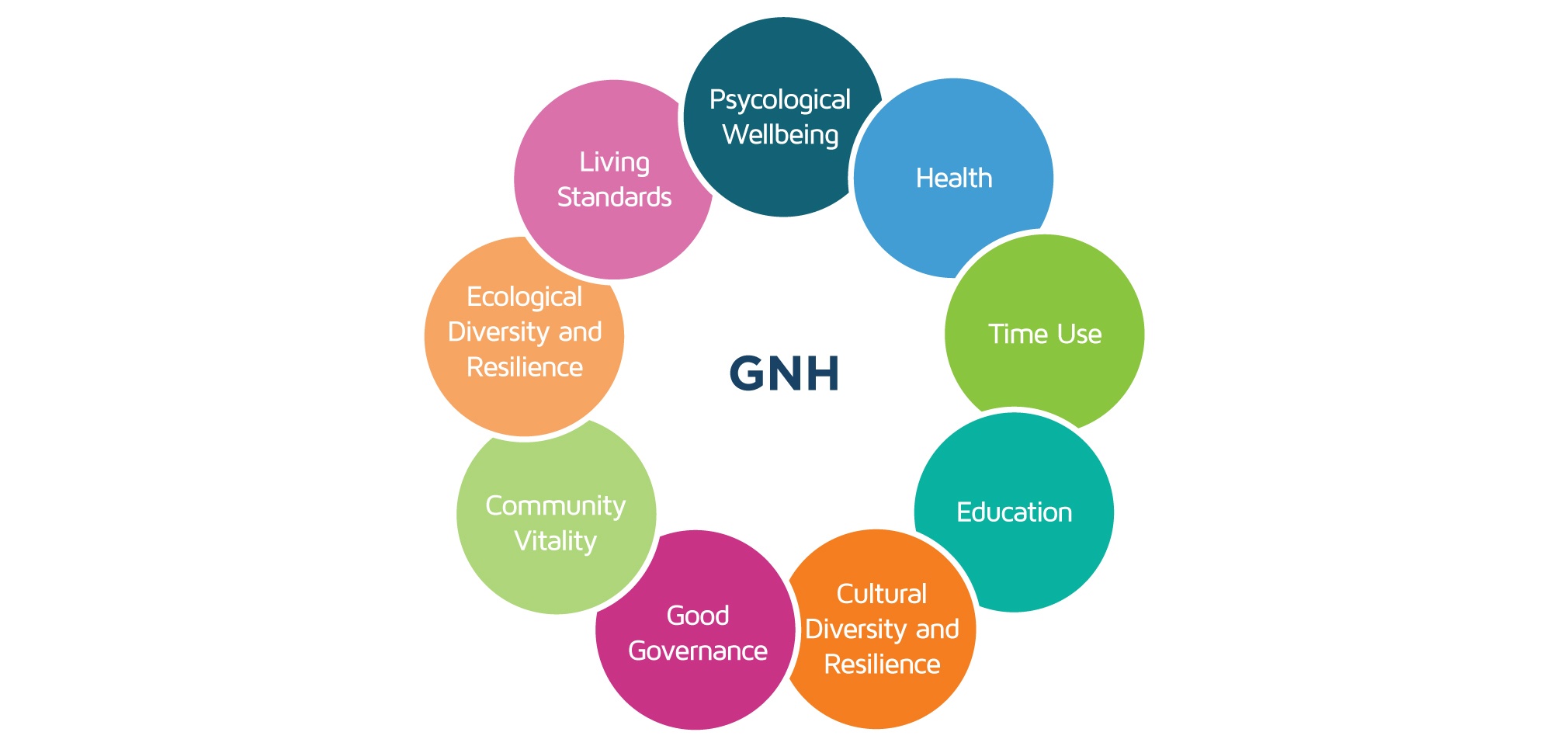The term Gross Domestic Product (GDP) is a conventional indicator used to measure the economic health of a country. Policymakers, economists, and businesses associate a high GDP per citizen with a higher quality of life and thus a higher level of collective happiness. Nonetheless, some voices state that GDP is not the most suitable tool to measure the happiness and wellbeing of a nation. The Gross National Happiness (GNH) was introduced as an alternative to GDP, developed to capture the quality of socio-economic growth more holistically and guide sustainable development through material and spiritual wellbeing. This article defines each of the two terms and highlights the main differences between these concepts.
What is Gross Domestic Product?
GDP is a popular indicator used to measure the economic output of a country. The measurement focuses on the size, health, and progress of an economy over a specific time frame (e.g., trimester, semester, or one year). The GDP can be computed for a single country or a group of countries (e.g., the European Union). Thus, the GDP is defined as the monetary output of all the finished goods and services produced within a country or group of countries in a specific period. In this context, the Nominal GDP represents the output of the economic production measured in current prices.
Fig.1. Formula for calculating the nominal GDP

What is Gross National Happiness?
The term Gross National Happiness was introduced in Bhutan in 1972 as an alternative to the Gross Domestic Product. The GNH was developed to measure the national socio-economic progress of Bhutan by capturing the economic growth and the subjective perception of happiness and wellbeing. Thus the GNH is more citizen-centric compared to the GDP which focuses more on economic performances. The Gross National Happiness Index is a multidimensional framework built around 33 indicators categorized under nine domains used to measure and guide the achievement of meaningful societal progress through a harmonized approach.
Fig.2.The Gross National Happiness domains of wellbeing

Gross Domestic Product vs Gross National Happiness
As a conventional indicator, the GDP comes with a series of limitations. First of all, GDP was never intended to capture the well-being of society. Initially, it was created to assess wartime production capabilities. Moreover, the indicator does not differentiate between the positive or negative outcomes of production and development. For example, GDP captures the number of cars produced in a country in a certain year but does not account for the emissions that those will later generate.
The voices supporting the Gross National Happiness highlight the misconception that a greater GDP automatically represents a higher quality of life. As an alternative paradigm, the GNH measures the socio-economic progress of a country through integrated reporting and thinking. Thus, as an alternative development framework, the purpose of the GNH index is to establish the relevant indicators for each sector to guide development, allocate the resources necessary to achieve the targets previously set, and measure the results (people’s happiness).
The GDP calculation takes place on a yearly basis and follows the same formula for all countries around the world. The GNH, on the other hand, is calculated every five years in Bhutan and every year for the World Happiness Report. Interestingly, only one of the top 10 countries with the highest GDP – Germany – is present in the top 10 list of “happiest” countries highlighted in the 2021 World Happiness Report.
DevelopmentAid is the leading provider of business intelligence and recruitment tools designed to assist those active in the development sector. Join today and gain access to exclusive information on upcoming funding opportunities (tenders and grants) from the largest bilateral and multilateral donors.

